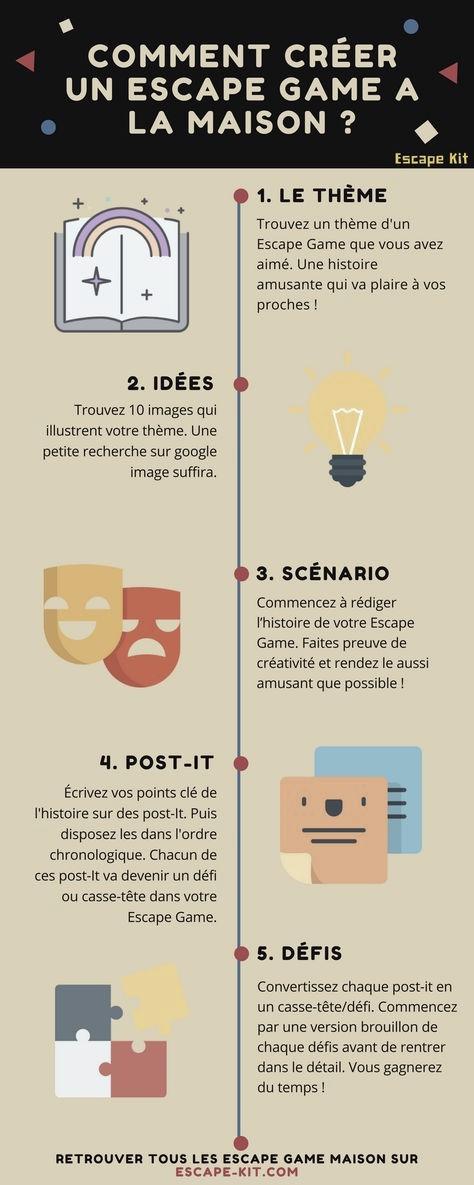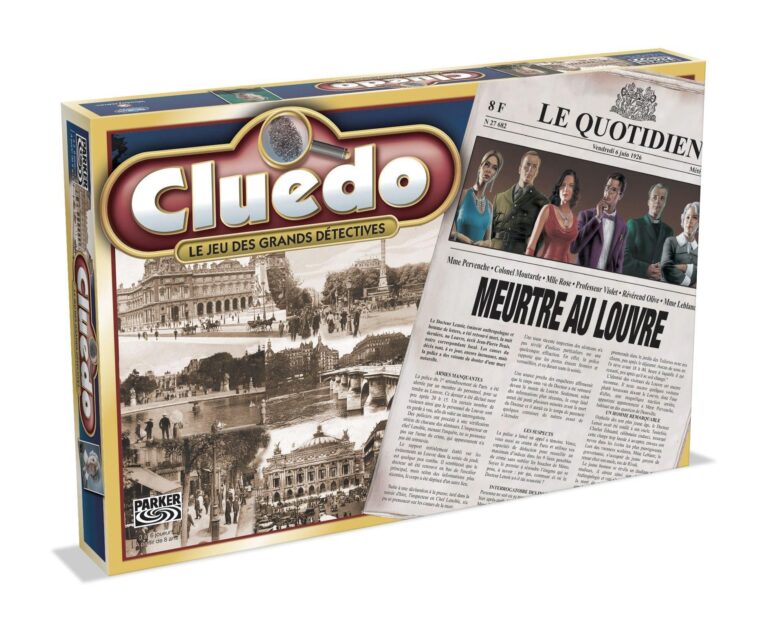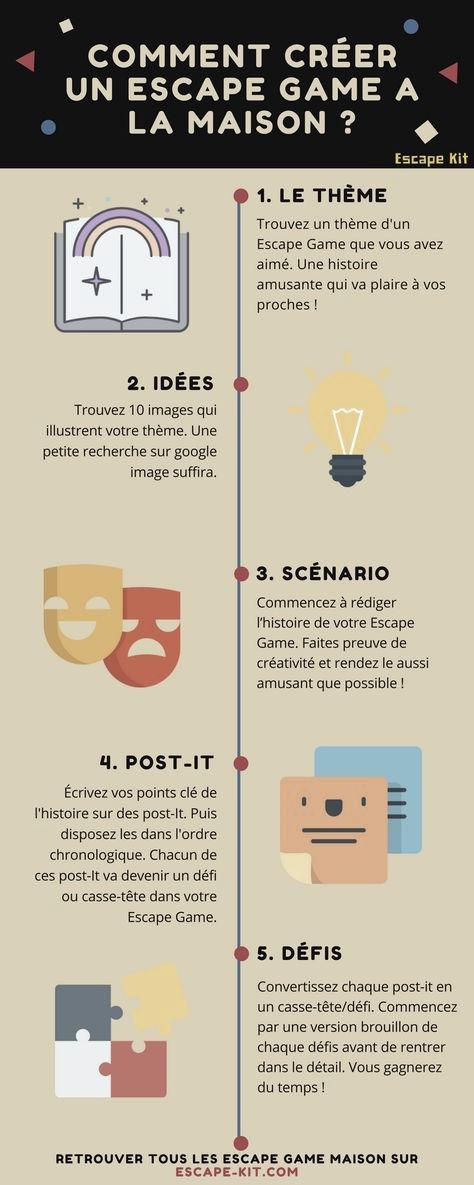Créer un Escape Game: Les étapes clés pour le réussir!
How to make a escape game at home? 
How to create an Escape Game at home?
Discover our games to play at home!
Following the trails of the Nautilus
Superheroes vs. Dr. Evil
Who Murdered Madame Duroy?
Dare to Enter?
Countdown Escape Game Free with ambiance music
Get yourself organized to succeed in your Escape Game!
I. Write your Escape Game’s scenario
If you want to create an escape game at home, the first step is to write the scenario . This is the backbone of your game and will determine the overall theme and plot. Think about an intriguing story or situation that will engage the participants and keep them motivated to solve the puzzles.
Start by defining the setting and the characters involved. Then, outline the main objectives and challenges that the players will face. You can use a brainstorming session to generate ideas and create an outline for your scenario.
Remember to create a cohesive narrative that will guide the players throughout the game. Use HTML tags to format your scenario and make it visually appealing . You can highlight important clues or information using bold text or different colors.
Once you have the scenario written, read through it several times to ensure clarity and coherence. Make any necessary adjustments or additions to enhance the overall experience.
II. Split your scenario into stages
After writing the scenario, the next step is to split it into stages . Stages are the different sections or levels of your escape game, where players will encounter different challenges and puzzles.
Consider the difficulty level of each stage and make sure there is a logical progression from one stage to another. Start with simpler puzzles to help players understand the rules and mechanics of the game, and gradually increase the complexity as they advance.
Use HTML lists to organize the stages and describe the objectives or puzzles in each stage . This will make it easier for both you and the players to follow the game’s progression.
Remember to include clear instructions or hints at the end of each stage to guide players and prevent them from getting stuck. Strike a balance between challenge and guidance to ensure an enjoyable and rewarding experience.
III. Write all the riddles of your Escape Game
An essential part of an escape game is the riddles or puzzles that players need to solve. Write down all the riddles or challenges that will be included in your game.
Consider the theme of your game and try to create riddles that are relevant and engaging. Use a mix of different types of puzzles, such as logic puzzles, math problems, or word games, to keep the game varied and interesting.
Use HTML formatting to highlight important information or provide hints within the riddles. For example, you can use tables to organize information or use bold text to emphasize certain words or clues.
Ensure that the riddles are solvable but not too easy. Test them out yourself or ask friends to try them to ensure they provide the right level of challenge. Make sure the solutions to the riddles are logical and make sense within the context of the game.
IV. Add immersion to your game!
Immersing players in the game’s atmosphere is crucial for creating an unforgettable escape game experience. Add immersion elements such as sound effects, music, or visual cues to enhance the overall atmosphere and make the game more engaging.
If possible, create a separate room or area dedicated to the game, with appropriate decorations and props related to the theme. This will further immerse the players in the game’s world and enhance the overall experience.
Consider using HTML multimedia tags to embed background music or audio snippets that match the theme of your escape game. You can also insert images or videos that provide visual cues or additional information.
Remember to test the immersion elements and make sure they enhance the game without becoming overwhelming or distracting.
V. Test your Escape Game at home
Once you’ve created your escape game, it’s essential to test it at home to identify any potential issues or areas for improvement. Gather a group of friends or family members and let them play through the game.
Observe their reactions, timing, and level of engagement throughout the game. Take notes on any difficulties they encounter, unclear instructions, or puzzles that may need adjustment.
Use this feedback to refine your game and make any necessary changes. It’s essential to ensure that the game flows smoothly and provides an enjoyable experience for the players.
Repeat the testing process several times, if possible, with different groups of players, to gather more feedback and make further improvements.
Your game is tested and approved? Good job!
Once you’ve refined and tested your escape game and received positive feedback, congratulations on a job well done! Now, you’re ready to invite friends or organize an escape game event at home.
Remember to provide clear instructions to the players, explain the game’s rules and objectives, and be available to answer any questions or provide hints if needed.
Ensure that the game progresses smoothly, and players have a fun and challenging experience. Take note of any additional feedback or suggestions from the players to further improve your game in the future.
Réflexions finales
Creating an escape game in HTML language can be a thrilling and rewarding experience. By utilizing HTML tags and formatting, you can enhance the visual appeal of your game and provide an immersive experience for the players.
Remember to carefully plan and structure your game, write engaging scenarios, and create challenging puzzles. Implement immersion elements to enhance the atmosphere and thoroughly test your game to ensure a smooth and enjoyable experience.
With dedication and creativity, you can create an unforgettable escape game that will entertain and challenge players right in the comfort of your own home.
FAQ
Comment réaliser un escape games ?
Pour réaliser un Escape Game, il faut d’abord définir un scénario avec un contexte, une mission et des énigmes. Ensuite, aménagez l’espace de jeu avec les éléments nécessaires pour résoudre ces énigmes. Enfin, testez votre jeu pour vérifier que les énigmes logiques et physiques fonctionnent et sont résolubles dans le temps imparti.
Comment faire un escape game pour ado ?
Pour créer un escape game pour ado, il faut d’abord choisir un thème attractif pour cette tranche d’âge (espionnage, aventures fantastiques, etc.). Ensuite, concevez une série d’énigmes adaptées à leur niveau de réflexion et qui s’intègrent bien dans le récit du jeu. Enfin, arrangez un espace de jeu pour créer une ambiance stimulante – une pièce chez vous peut être adaptée, ou bien vous pouvez même utiliser un cadre extérieur si l’intrigue le permet.
Comment faire un escape game en extérieur ?
Pour faire un escape game en extérieur, il faut d’abord définir un scénario avec des énigmes à résoudre. Ensuite, il faut aménager le terrain extérieur de manière à ce qu’il corresponde à l’intrigue imaginée et cacher des indices à des endroits précis. Enfin, il faut expliquer les règles du jeu aux participants et les laisser démarrer leur aventure.
Quel thème pour un escape game ?
Un thème possible pour un escape game peut être ‘L’évasion d’Alcatraz’, où les participants doivent résoudre des énigmes pour s’échapper d’une célèbre prison américaine.






